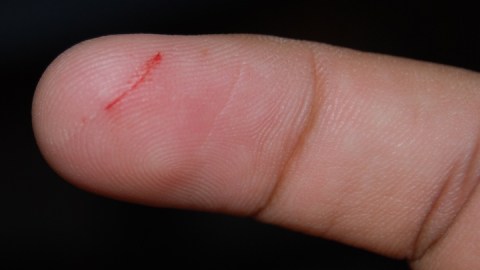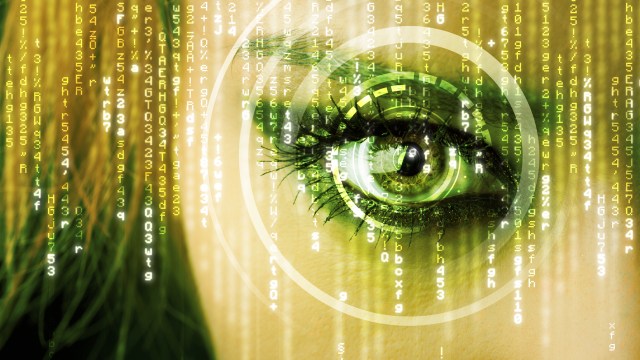Here’s Why a Paper Cut Hurts So Damn Much

It’s hardly an injury that’s even worth noting, but whyohwhyohwhy do paper cuts on our fingers hurt so incredibly much? It’s just ridiculous that these boo-boo-class wounds can elicit a “yow!” from even the hardiest grownup. Here’s what’s going on.
First of all, let’s talk about pain. Though we don’t like it — most of us, anyway — it helps us stay safe. It’s a warning mechanism that something’s wrong. How else would you know to pull your hand back from a burner, or lift your foot off a protruding nail? Scientists are even trying to teach robots to feel pain so they can better look out for themselves. There are people afflicted with “congenital insensitivity to pain,” or “CIPA,” who can’t feel it — and this condition is not something to envy. Babies with CIPA can chew off pieces of tongue or their fingers during teething without realizing it. Sufferers may damage their corneas because they can’t feel when they’re rubbing their eyes too hard. In general, they lack the painful warning signals that would keep them from doing things that hurt them.
So, lucky us. Yay for pain. And that brings us back to paper cuts. There are four reasons they’re so despicable.
Our fingers contain an unusually high concentration of pain-perceiving nerve endings called “nociceptors.” Dermatologist Hayley Goldbach from the University of California, Los Angeles, told the BBC “Fingertips are how we explore the world, how we do small delicate tasks, so it makes sense that we have a lot of nerve endings there. It’s kind of a safety mechanism.” But having so many in one place means that we really feel an injury to our fingertips.
Then there’s the perp: paper. The edge of a piece of paper may seem smooth, but it’s really not. It’s jagged enough on a microscopic level that it essentially saws, not slices, through skin. Bonus: Paper also often leaves behind irritating paper-processing chemicals.
The third reason paper cuts feel the way they do is that they’re not deep enough to trigger blood-clotting — scabbing — so the inside of the wound and your nerve endings are left exposed.
And finally, there’s the fact that you can barely function without using the injured digit, and so you’re likely to keep bumping the wound, or at least flexing or stretching the skin around it, reminding yourself each time just how much you hate paper cuts.
Here’s a cool video from Scientific American about these nuisances.





